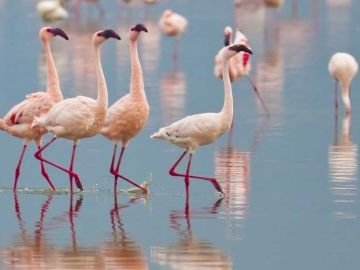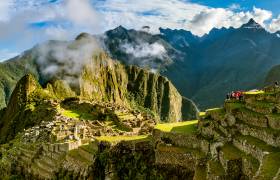Read time – 2 minutes
Driven by a primal urge to feed and breed, many of the world’s wildlife species spend much of their lives on the move.
Whether it’s wildebeest in search of greener pastures in east Africa or whales seeking out plankton blooms, these epic migrations are amongst the greatest wildlife spectacles you will ever encounter.
Experience The Great Migrations
Flamingo Migration
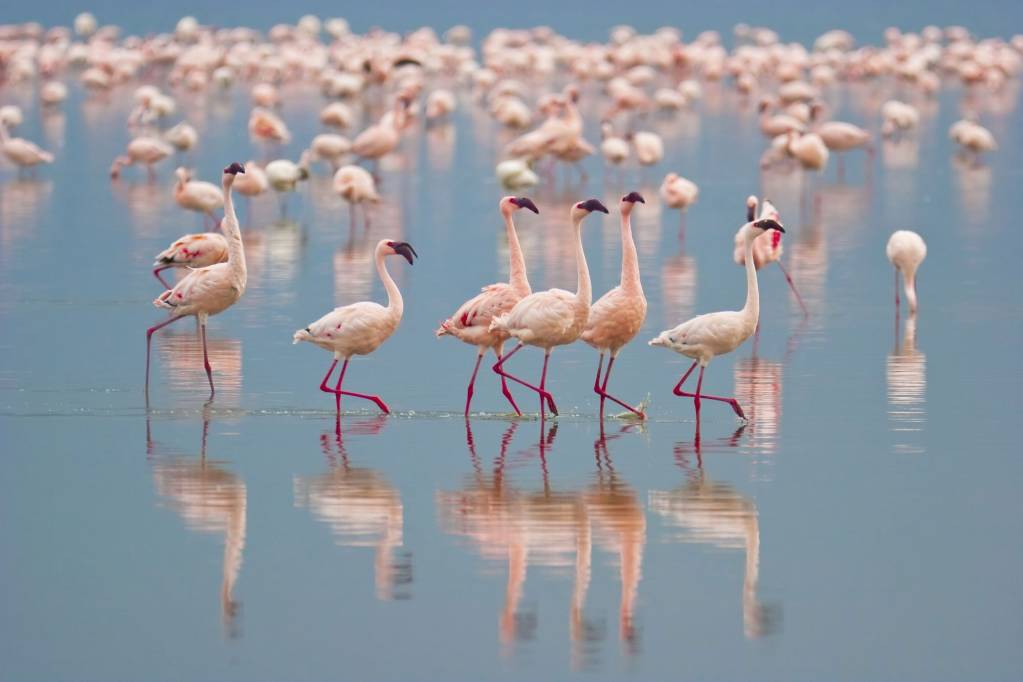 Flamingos at Lake Nakuru
Flamingos at Lake Nakuru
Although their numbers have fluctuated in recent years, you can expect to see between 20,000 and 250,000 flamingos on Lake Nakuru during the spring months, their radiant pink hues shimmering on the lake’s mirror-like surface.
The long-legged lesser pink flamingos come here each year to feed on the lake’s blue-green algae.
When: April to June
Where: Lake Nakuru, Kenya
Bee-eater Migration
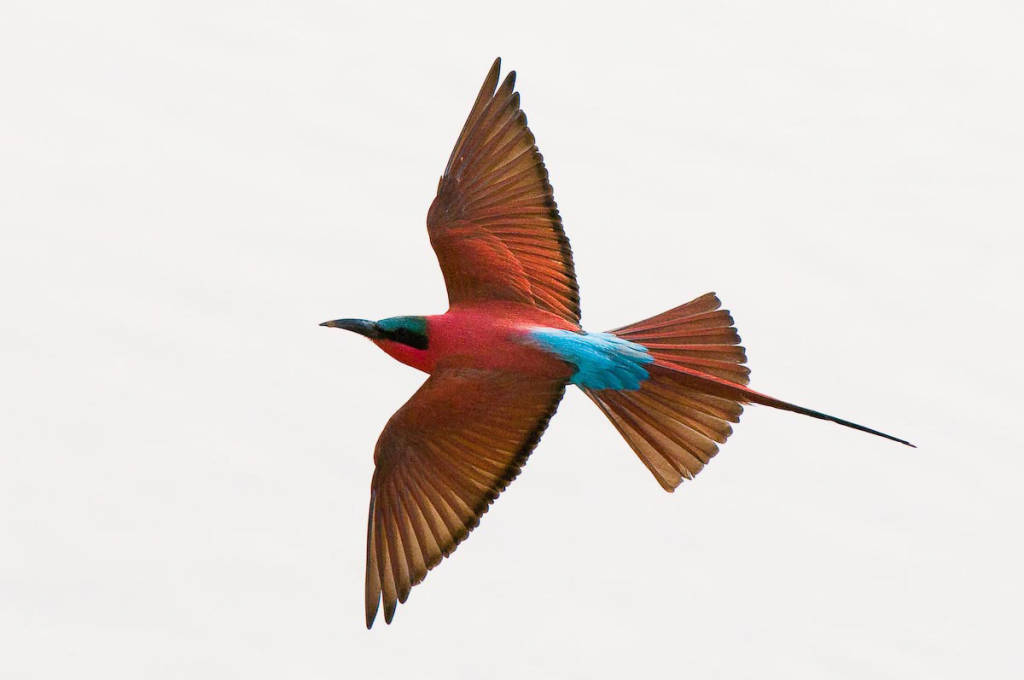 Carmine Bee-eater in flight in South Luangwa
Carmine Bee-eater in flight in South Luangwa
Come the summer, Southern Carmine bee-eaters flock back to their sub-Saharan breeding grounds in their thousands and South Luangwa National Park is a stronghold for these resplendent rose-flushed winged migrants.
Outside the breeding months, Carmines are nomadic, flying between 300 and 750 miles around south-central Africa and South Africa, making it one of the greatest migrations in the avian world.
When: September & October
Where: South Luangwa, Zambia
The Great Wildebeest Migration
 The Great Migration crossing the Mara River
The Great Migration crossing the Mara River
A constant need to feed drives over a million of east Africa’s wildebeest – not to mention hundreds of thousands of zebra, gazelle and eland – to complete an 1800 mile circular journey of the Serengeti and Masai Mara.
While the animals are perpetually on move, the dry season is typically the best time to witness the migrating ruminants in Kenya, especially if you want to catch them heading for the mighty Mara River where hundreds of hungry crocs await their four-legged dinner!
When: July – October
Where: Masai Mara, Kenya
Blue Whale Migration
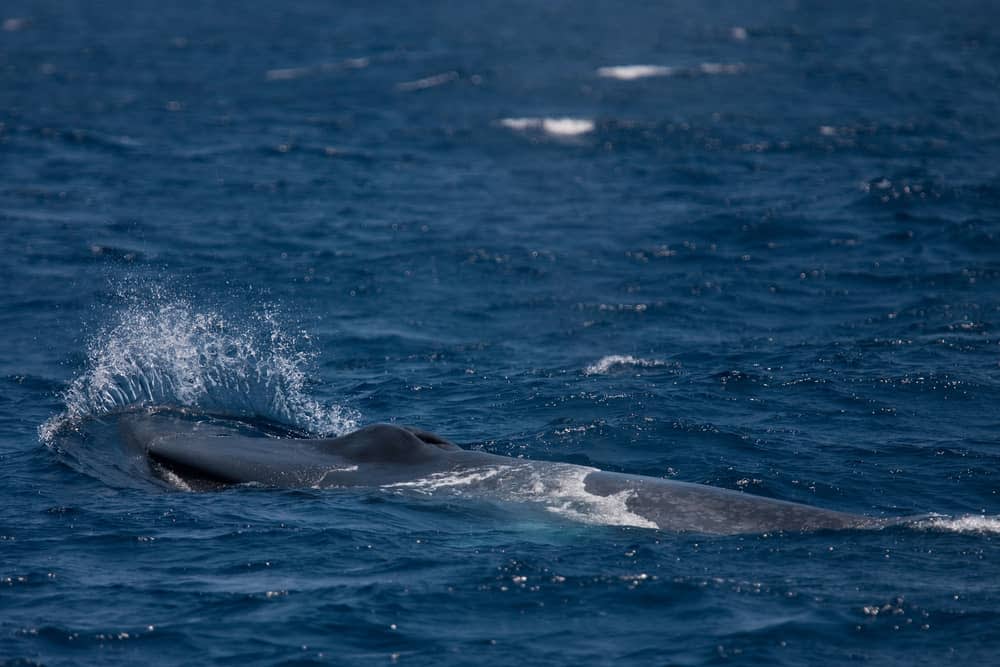 Blue whale in Sri Lanka
Blue whale in Sri Lanka
The largest creature on Earth, the Blue whale, spends much of its time roaming the world’s oceans in solitude or small groups, covering thousands of miles at a time.
But there is something about the Indian Ocean warm waters off the south coast of Sri Lanka that attracts Blues in good numbers a couple of times each year.
When: March, April & November
Where: Mirissa, Sri Lanka
Arctic Tern Migration
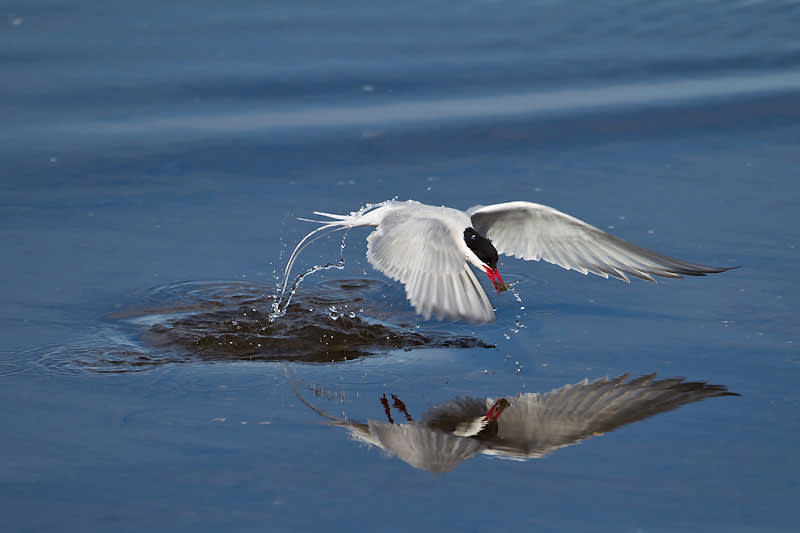 Arctic tern in flight
Arctic tern in flight
The ultimate long-distance migrants, Arctic terns make an epic annual round trip of around 40,000 miles – the longest avian migration in the world.
Flying south from their Arctic breeding grounds, the terns will spend winter off Antarctica before returning north, either via the Americas or Africa, most likely to the colony where they themselves hatched.
When & Where:
Arctic – May to August
Antarctica – December to February
Grey Whale Migration
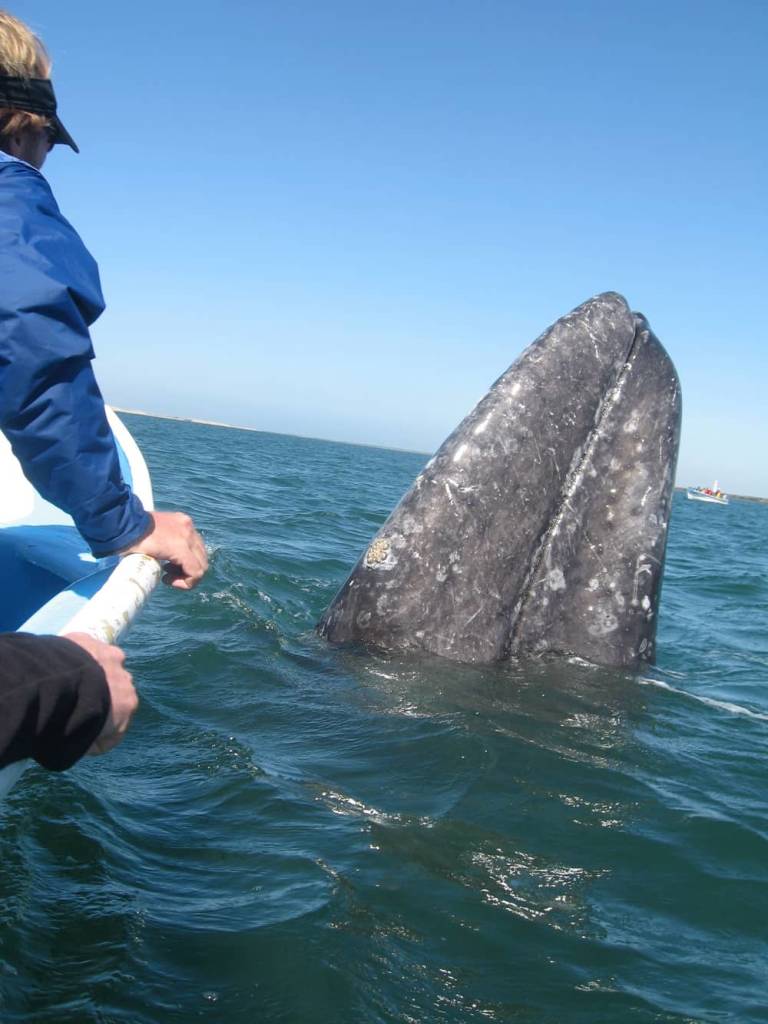 Friendly Grey whale in Baja
Friendly Grey whale in Baja
Each year, these inquisitive cetaceans cover over 8,000 miles as they journey south from their Arctic feeding grounds to winter in Baja’s balmy lagoons.
Free of sharks and Orcas, the greys come to these mild waters to socialise, mate and nurse their calves without threat. Operators adhere to a strict code of conduct when whale watching, keeping boats at least 30 metres away, but it seems nobody told the whales!
When: February – March
Where: Baja, Mexico
Be inspired by our wildlife holidays below.
